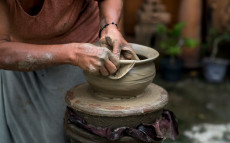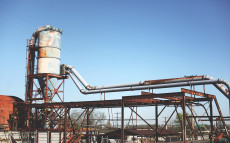- pathfindersAI
- Job Profile
Commercial and Industrial Designers
Summary
Commercial and Industrial Designers: Shaping the Future of Products and Industries
Commercial and industrial designers play a crucial role in bringing innovative products to market. This essay will delve into the multifaceted nature of this career through various sections, including what they do, job responsibilities, essential skills, educational pathways, and career prospects. We will conclude by summarizing the importance of these professionals in today's economy.
What They Do
Commercial and industrial designers are the creative minds behind the design and development of a wide variety of manufactured products, ranging from automobiles and household appliances to toys and medical equipment. These professionals combine art, business, and engineering to make products that are not only functional and user-friendly but also aesthetically pleasing. They work closely with engineers, production managers, and marketers to ensure that the products meet consumer needs and industry standards.
Job Responsibilities
The job responsibilities of commercial and industrial designers are varied and multifaceted. They start by meeting with clients or conducting market research to understand the user needs and preferences. Based on this data, they sketch out initial concepts, either by hand or using computer-aided design (CAD) software. Following this, they create prototypes and refine them through multiple iterations, incorporating feedback from stakeholders. Another critical responsibility is ensuring that the designs are cost-effective and feasible for mass production. Moreover, designers often have to stay updated with the latest design trends and technological advancements to maintain a competitive edge.
Essential Skills
Succeeding as a commercial and industrial designer requires a unique blend of skills. First and foremost, creativity and innovation are crucial for generating original ideas. Strong visualization and sketching abilities enable designers to communicate their concepts clearly. Proficiency in CAD software is essential for creating detailed designs and prototypes. Effective communication skills are also vital, as designers need to articulate their ideas to team members and clients. Additionally, problem-solving skills are important for addressing any technical or design challenges that may arise during the development process. Lastly, a keen eye for detail ensures that the final product is both functional and aesthetically pleasing.
Educational Pathways
Becoming a commercial and industrial designer typically requires at least a bachelor’s degree in industrial design, architecture, or engineering. College programs often include courses in design principles, computer-aided design, materials science, and manufacturing processes. Many programs also offer internships or cooperative education experiences, providing students with hands-on learning opportunities. Graduates may also opt for advanced degrees or specialized certifications to further hone their skills and increase their job prospects. Portfolio development is another critical aspect of education, as showcasing a strong portfolio can make a significant difference when applying for jobs.
Career Prospects
The career prospects for commercial and industrial designers are generally promising. According to the U.S. Bureau of Labor Statistics, employment in this field is projected to grow at a rate consistent with the average for all occupations. Designers with expertise in sustainable practices or advanced technological skills, such as 3D printing and digital design, are likely to have a competitive edge. Employment opportunities can be found in diverse industries, including automotive, electronics, consumer goods, and healthcare. Many designers also choose to work as freelancers or start their own design firms. The versatility of this career offers multiple pathways for professional growth and specialization.
Conclusion
In conclusion, commercial and industrial designers are pivotal in shaping the products and technologies that define modern life. Through a blend of creativity, technical knowledge, and strategic thinking, they bring innovative ideas to fruition. With a solid educational foundation and a diverse skill set, these professionals are well-equipped to navigate the challenges of the ever-evolving market landscape. As industries continue to prioritize design and user experience, the role of commercial and industrial designers will remain indispensable, driving both economic and technological advancements.
Video
Compensation
| State | Median Salary | Median Hourly | Positions |
|---|---|---|---|
| AL | 74,810 | 35.97 | 110 |
| AZ | 79,570 | 38.25 | 210 |
| AR | 77,270 | 37.15 | 200 |
| CA | 84,190 | 40.48 | 4,980 |
| CT | 75,920 | 36.50 | 310 |
| DC | 132,270 | 63.59 | 40 |
| FL | 64,870 | 31.19 | 2,050 |
| GA | 75,860 | 36.47 | 560 |
| ID | 61,660 | 29.64 | 180 |
| IL | 63,650 | 30.60 | 660 |
| IN | * | * | 460 |
| IA | 82,260 | 39.55 | 790 |
| KS | 96,700 | 46.49 | 140 |
| KY | 74,930 | 36.03 | 230 |
| LA | 87,340 | 41.99 | 220 |
| ME | 61,190 | 29.42 | 170 |
| MD | 72,390 | 34.80 | 330 |
| MA | 86,420 | 41.55 | 720 |
| MI | 73,610 | 35.39 | 2,090 |
| MN | 78,590 | 37.79 | 890 |
| MO | 70,080 | 33.69 | 530 |
| MT | 54,050 | 25.98 | 70 |
| NE | 72,850 | 35.02 | 80 |
| NV | 81,760 | 39.31 | 100 |
| NH | 74,290 | 35.72 | 100 |
| NJ | 82,080 | 39.46 | 1,430 |
| NM | 56,510 | 27.17 | 90 |
| NY | 75,200 | 36.15 | 3,050 |
| NC | 76,250 | 36.66 | 920 |
| ND | 46,440 | 22.33 | 80 |
| OH | 65,690 | 31.58 | 1,620 |
| OK | 70,550 | 33.92 | 280 |
| OR | 83,490 | 40.14 | 160 |
| PA | 71,420 | 34.34 | 600 |
| RI | 81,800 | 39.33 | 320 |
| SC | 84,170 | 40.47 | 380 |
| SD | 49,850 | 23.97 | 150 |
| TN | 60,720 | 29.19 | 700 |
| TX | 81,660 | 39.26 | 1,360 |
| UT | 61,340 | 29.49 | 830 |
| VT | 73,850 | 35.51 | 120 |
| VA | 75,150 | 36.13 | 450 |
| WA | 108,960 | 52.39 | 240 |
| WI | 75,240 | 36.17 | 400 |
Similar Occupations
In this area you will find other occupations that are close to the one you were viewing in tasks, knowledge and work environment. If the primary job profile you are viewing isn't quite to your liking, take a look around and see what else is available.
Basic and Premium Accounts have more alternative occupations available than the Free account.

Craft Artists - 27-1012.00
Craft artists create handmade objects, utilizing various materials such as ceramics, glass, textiles, and wood to produce unique artworks or functional items. They often sell their creations through galleries, online platforms, or craft fairs while sometimes giving workshops to share their skills.
-
$36,600/yr
Median Pay -
5,830
Number of Jobs

Fabric and Apparel Patternmakers - 51-6092.00
Fabric and Apparel Patternmakers create templates for the construction of clothing and other textile products, ensuring precise measurements, shapes, and styles align with design specifications. They transform designers' concepts into detailed pattern pieces that guide the cutting and assembly process in garment manufacturing.
-
$62,510/yr
Median Pay -
2,670
Number of Jobs